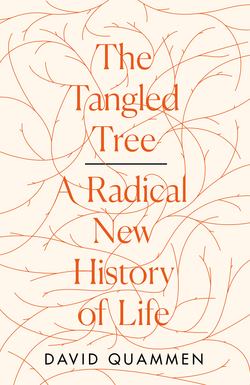Читать книгу The Tangled Tree: A Radical New History of Life - David Quammen, David Quammen - Страница 24
16
ОглавлениеHow do you classify the methanogens? Where do they fit on the tree of life? To what other little bugs are they most closely related? Those questions, which Woese and his colleagues were asking themselves in the mid-1970s, fell within the scope of an important discipline with a dry name: bacterial taxonomy. That’s the enterprise of sorting bacteria into nested groups: species, genera, families, etcetera. You name something Methanobacterium ruminantium, and then where do you put it?
This may sound like an exercise in arcana, a marginal activity of risible triviality beside which stamp collecting looks like an adventure sport. Bacteria are tiny, relatively simple, invisible. But if being invisible made things unimportant, gravity and microwaves would be unimportant too. It’s useful to recall that most life-forms on Earth are microbial, that they determine the conditions of existence for the rest of us, and that even the human body contains at least as many microbial cells (those tiny passengers that live in your gut, on your skin, in the follicles of your eyelashes, and elsewhere) as human cells. Your environment is highly microbial too. Your food. The air you breathe. Microbes run the world, and a very large portion of those microbes are bacteria. Some of them serve as helpful partners of humanity. Some are benign. Some are rapacious, ready to poison your blood, fill your lungs, kill you. So it’s no small matter, telling one bacterium from another.
Scientists once believed it might be possible to do this from visual evidence obtained through a microscope. They even presumed that the concept of species, as understood for animals and plants and fungi, could be applied to bacteria. These were useful simplifications in their era—like the simplifications of Newtonian physics, before correction by Einstein—but that era was a long time ago.
The early hero in the field was a man named Ferdinand Julius Cohn, a botanist and microbiologist at the University of Breslau (now Wrocław, Poland) during the late nineteenth century. Cohn is an appealing figure, and only partly because his important contributions have been overshadowed by those of better-remembered contemporaries whose accomplishments were more practical and dramatic: Louis Pasteur, Robert Koch, Joseph Lister. They worked on disease, agriculture, and wine. Cohn worked mainly on describing and classifying microscopic organisms. No one makes Hollywood movies about bacterial taxonomists.
Cohn wasn’t the first researcher to classify bacteria, making distinctions between kinds, trying to place the whole group in its proper position on the tree of life. But his effort was more hardheaded and percipient than the others, and he did much to bring bacteriology out of a fog of confusions that had lingered for more than a century, ever since startled observers such as Leeuwenhoek had noticed these little creatures through simple microscopes. Several insights and adjustments of method helped him make progress. Microscopy improved, with better lenses and precision instruments in which they were mounted. Cohn’s lab started culturing bacteria on solid media such as slices of cooked potato, not in liquid nutrient, the old way. That allowed Cohn to choose, cultivate, and consider different strains separately. Also, he recognized that physiological and behavioral characteristics as well as structural ones could be useful for distinguishing bacterial species: How do they grow in different media? How do they move? By this time, too, Cohn had embraced Darwin’s theory of evolution, and so it made sense to him that bacterial strains might change and adapt over time. This was incremental change, very different from the sort of utter transformation—one bacterial form suddenly morphing into another—that some scientists imagined to occur. Cohn didn’t buy transformation. He saw bacteria as fundamentally stable in their identities. Finally, he published his system, dividing them into four tribes: spherical, rod shaped, filamentous, and spiral, each of which got an imposing Latinate name. Within the tribes, he drew finer distinctions, separating them into genera and species.
Not everyone in the field accepted Cohn’s classification of bacterial species or his conviction about their stable identities, and the idea of shape-shifting bacteria lingered for more than a decade. The longer judgment of science historians was good to him, as a man and a scientist, noting his “reserve” against self-promotion, his modesty, his eloquent lecturing, and his success in “disentangling almost everything that was correct and important out of a mass of confused statements on what at that time was a most difficult subject to study.” Besides arguing for the reality of bacterial species and sketching a way to classify them, Cohn did much, along with Pasteur, to kill the resilient delusion that new life-forms arise by spontaneous generation. They don’t, he showed. When bacteria seem to appear out of nowhere, it’s because they have arrived from somewhere: contamination, floating through the air, reawakening spores. Cohn’s work was “entirely modern in its character and expression,” according to an authoritative chronicler of the field, writing in 1938, “and its perusal makes one feel like passing from ancient history to modern times.” But what looked modern in 1938, of course, doesn’t look modern now.
Even the devoutly empirical Ferdinand Cohn made mistakes. For one: after all his research, he still believed, as many of his colleagues did, that bacteria belong to the kingdom of plants. So his tree of life, by later standards, was badly wrong. For another: the premise of radical transformation, one bacterial form to another, turns out to be vastly more complicated than he could imagine.
